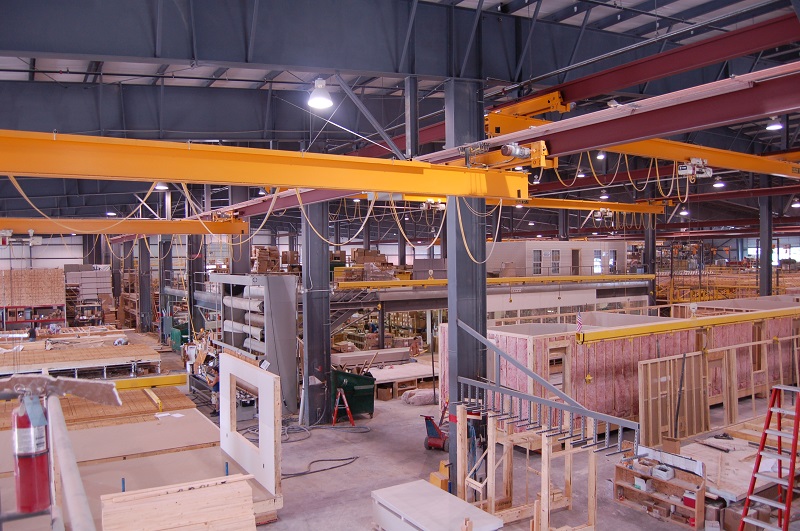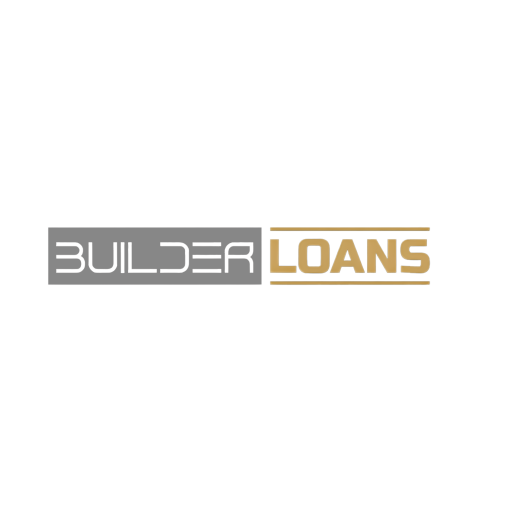How To Secure a Construction Loan is a short-term, often temporary, financing option specifically designed to cover the costs associated with building or renovating a property. Unlike a traditional mortgage, which is based on the value of an existing property, a construction loan is based on the projected value of a property once construction is complete. For individuals and businesses, such loans become crucial when they’re looking to construct a new home, commercial space, or undertake significant renovations but lack the upfront capital. By securing this loan, they can kickstart their project, ensuring timely progress and completion.
How To Secure a Construction Loan: A Checklist
Understanding Different Types of Construction Loans
In the realm of construction financing, there are several loan types tailored to fit diverse project needs. Knowing the differences can help borrowers pick the most suitable option for their project.
One-Time Close vs. Two-Time Close Loans
- One-Time Close Loans: Also known as a single-close loan, it combines the construction loan and the permanent financing (like a mortgage) into one loan. Upon completion of the project, there’s no need for a second loan closing, saving time and costs.
- Two-Time Close Loans: These require two separate transactions. The first loan is purely for construction and once the project is done, the borrower refinances into a regular mortgage.
Construction-to-Permanent Loans
- This loan starts as a construction loan and automatically converts into a long-term mortgage once the construction is finished. This ensures continuous financing from the start of the project to long after its completion, all under a single loan structure.
Stand-Alone Construction Loans
- These are purely for construction purposes. They do not automatically convert into a mortgage. Once construction is complete, the borrower must obtain a separate mortgage to pay off the construction loan. This is ideal for those who have substantial equity in their current home and don’t need to roll their construction loan into a permanent mortgage.
Renovation Construction Loans
- Specifically designed for projects that involve significant remodeling or expansion of an existing property. Unlike standard construction loans that cater to new builds, these are tailored for upgrades, allowing property owners to elevate the value of their current spaces.
Preliminary Steps Before Applying
Before diving into the world of construction loans, there are vital steps to set you on the path to approval. Taking these steps not only increases the chances of securing the loan but also ensures the smooth progression of your project.
Scope and Cost Estimation
- Begin by defining the project’s parameters. Whether it’s a new build or renovation, have a clear vision. Then, work with professionals, if needed, to estimate the total cost.
Blueprints and Detailed Plans
- A well-detailed plan or blueprint is paramount. Lenders often require this to gauge the project’s viability. Consider consulting an architect or contractor for precision.
Budgeting with a Safety Net
- While you have a cost estimate, it’s essential to formulate a budget. Don’t forget to include a contingency, typically 10-20%, to cover unforeseen expenses.
Credit Score Building
- A good credit score is crucial. Lenders view this as a measure of trustworthiness. Prioritize clearing outstanding debts and pay bills on time to bolster your score.
Saving for a Down Payment
- Most lenders expect a down payment, often 20% of the total loan or more. Start saving early to meet or even exceed this requirement, showcasing your financial commitment.
Choosing the Right Lender
Navigating the sea of lending options can be daunting. However, the choice of a lender can significantly impact the ease, cost, and success of your project. Here’s a guide to help you make an informed decision:
Local Banks vs. National Banks
- Local Banks: Often more flexible and willing to negotiate terms. Being community-based, they may have a better understanding of local construction trends and needs.
- National Banks: Typically offer more standardized loan products. Their vast resources can sometimes translate to better rates, but they might lack the local touch.
Venturing into Credit Unions
- Credit unions are member-owned, which can lead to more favorable terms and interest rates. They often emphasize personal relationships and might be more understanding of unique financial situations.
Online Lenders: A Modern Take
- The digital age brings specialized online lenders focused on construction loans. They can offer competitive rates and a streamlined application process. However, ensure they’re reputable by checking reviews and any regulatory compliance.
Trust Recommendations
- Your builder or real estate agent can be a goldmine of information. Their experience in the industry means they’ve likely interacted with various lenders. Ask them for recommendations based on past client experiences or their personal insights.
Gathering Necessary Documentation

Securing a construction loan hinges significantly on the documentation you provide. This paperwork offers lenders a comprehensive picture of your financial health and the project’s feasibility. Here’s a breakdown of the essential documents:
Identity Verification
- Essential to ensure you are who you claim to be. Commonly accepted documents include passports and driver’s licenses.
Insight into Your Credit
- Your credit report is crucial as it reflects your creditworthiness. Lenders assess this to gauge the risk involved in lending to you.
Showcasing Your Earnings
- Proof of income gives lenders confidence in your ability to repay the loan. Documents like W-2 forms, recent pay stubs, and tax returns are standard.
Blueprint of Your Vision
- Detailed project plans and specifications outline the scope and intricacies of your project. Lenders use this to determine the viability and worth of the project.
Vetting Your Builder
- The credentials and qualifications of your builder or contractor are paramount. A reputable builder can be the difference between a project’s success and failure.
Proof of Land Ownership
- A land deed or any ownership documentation confirms your claim to the property. It’s essential, especially if the loan is to cover only the construction and not land purchase.
Project’s Future Value
- An appraisal report projects the finished project’s value. Lenders want to ensure that the loan amount aligns with this future value.
Understanding the Terms and Conditions
When securing a construction loan, it’s vital to grasp the terms and conditions laid out by the lender. These aspects can significantly impact your financial commitment and the project’s success:
Interest Rates (Fixed vs. Variable)
- Fixed Interest Rates: Stay constant throughout the loan term, offering predictability and stability. Ideal when interest rates are low or expected to rise.
- Variable Interest Rates: Fluctuate based on market conditions. May start lower but can increase over time, introducing an element of risk.
Loan Duration and Timelines
- Loan duration determines how long you have to repay the loan. Understanding the timeline is crucial to plan your finances accordingly and ensure timely project completion.
Draw Schedule (How and When Funds Are Disbursed)
- The draw schedule outlines when and how funds will be released during construction. It’s important to align this with your project’s progress and cash flow needs.
Fees and Closing Costs
- Be aware of any fees associated with the loan, including origination fees, closing costs, and any other charges. These can significantly affect the overall cost of borrowing.
Inspection Procedures and Requirements
- Lenders often require periodic inspections to verify that the project is progressing as planned. Understanding these requirements ensures compliance and a smooth disbursement of funds.
Tips for a Successful Application
When applying for a construction loan, a successful and smooth process is key to getting your project off the ground. These tips can help you navigate the application process effectively:
1. Maintain Consistent and Open Communication with Your Lender
- Stay in regular contact with your lender throughout the application process. Open lines of communication ensure that you are on the same page and can address any concerns or questions promptly.
2. Address Any Financial Issues or Hiccups Promptly
- If you encounter financial challenges or unexpected issues during the application process, don’t delay in informing your lender. Being proactive and transparent about any hurdles will build trust and help find solutions.
3. Stay Up-to-Date with Paperwork and Documentation Requests
- Keep a meticulous record of all paperwork and documents required by your lender. Submit requested documents promptly to avoid delays in the approval process.
4. Keep the Project on Schedule and Within Budget
- Strive to adhere to your project’s timeline and budget. Lenders are more likely to approve and disburse funds if they see that the project is progressing as planned. Regularly review your budget and adjust as needed to prevent overruns.
Managing the Loan Post-Approval

After your construction loan is approved and your project is underway, effective management is crucial to ensure a smooth and successful construction process. Here are key steps to manage the loan post-approval:
1. Regularly Monitor the Draw Schedule and Ensure Builders Are Paid on Time
- Keep a close eye on the draw schedule, which outlines when funds will be disbursed during the construction process. Ensure that payments to contractors and builders are made promptly to maintain progress.
2. Stay Vigilant for Any Potential Budget Overruns
- Continuously track your project’s expenses to prevent budget overruns. Having a contingency fund in place can help cover unexpected costs without derailing the project.
3. Communicate Any Changes in the Project to the Lender Immediately
- If there are any modifications or deviations from the original project plan, inform your lender promptly. Transparency is key to maintaining a good relationship and ensuring that the lender remains informed about the project’s status.
4. Ensure Periodic Inspections Are Conducted as Per Lender’s Requirements
Many lenders require periodic inspections to verify that the construction is progressing as planned. Coordinate with your lender to schedule these inspections and ensure compliance with their requirements.
Further Reading & Resources
Recommended financial consultants and experts for guidance:
BuilderLoans.Net Financial Advisory Team: Our in-house team of financial experts is always available to guide you through the nuances of construction loans and transition strategies.
Email: Info@BuilderLoans.net
Address: 6518 Lonetree Blvd., Suite 1058
Rocklin, CA., 95765
Conclusion
In the journey to secure a construction loan for your dream project, two pillars stand tall: meticulous planning and clear communication. These two elements are the keystones to not only acquiring the loan but also ensuring the successful execution of your construction endeavor.





